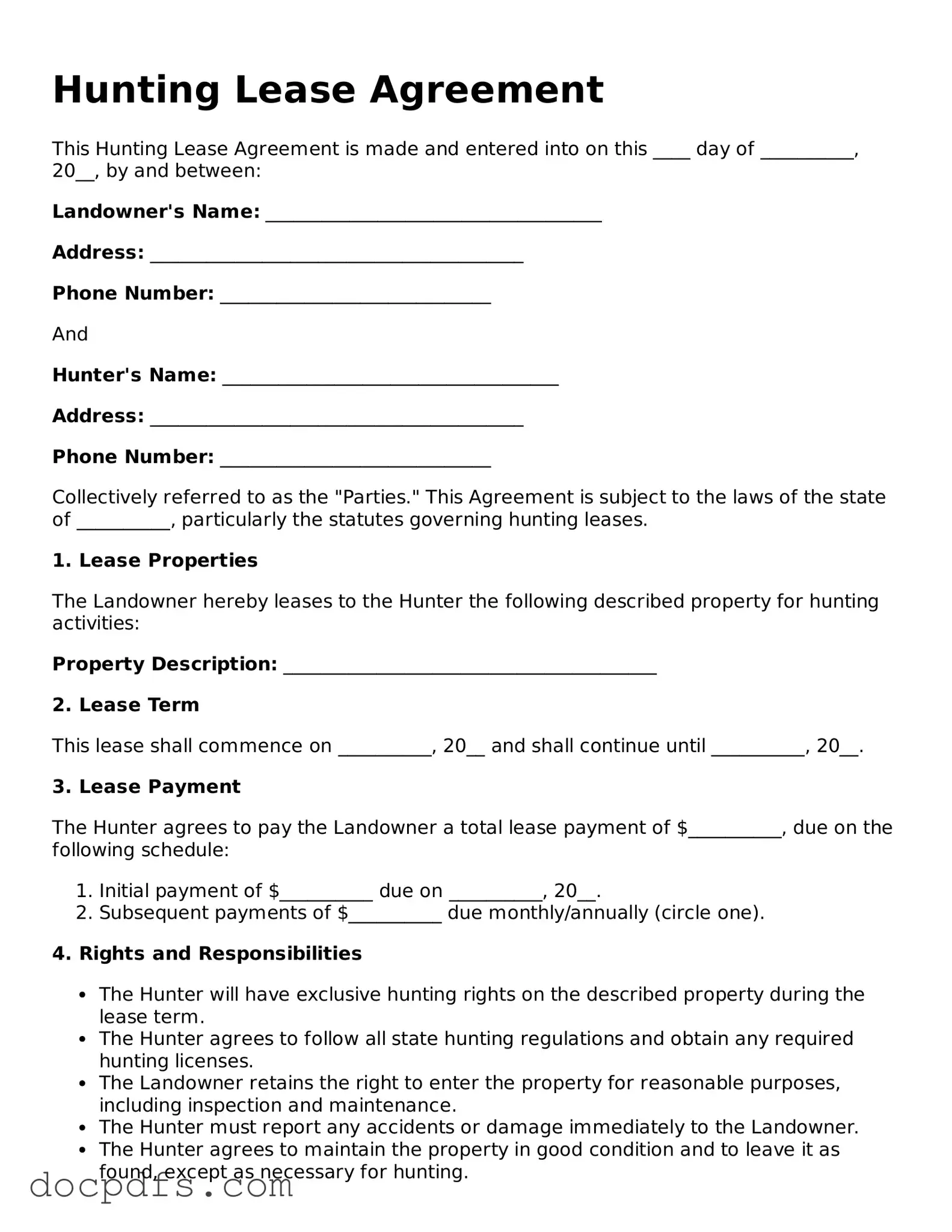When engaging in hunting activities on private land, a Hunting Lease Agreement form serves as a crucial document that outlines the terms and conditions between the landowner and the hunter. This form typically includes essential details such as the duration of the lease, the specific areas of the property that are available for hunting, and the types of game that can be pursued. Additionally, it addresses the financial aspects, including the lease fee and payment schedule, ensuring both parties have a clear understanding of their financial obligations. The agreement also often stipulates rules regarding safety, liability, and the responsibilities of both the landowner and the hunter. By clearly defining these aspects, the Hunting Lease Agreement not only protects the interests of the landowner but also provides hunters with the necessary guidelines to enjoy their experience responsibly and legally. Understanding the components of this agreement is vital for anyone looking to lease land for hunting purposes, as it fosters a respectful and mutually beneficial relationship between the parties involved.
